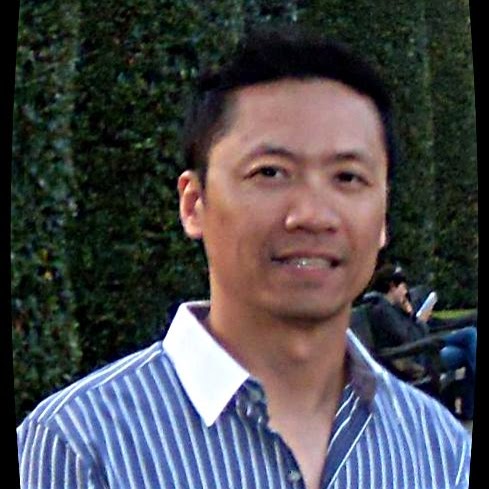Chuck D Wong
age ~95
from San Francisco, CA
- Also known as:
-
- Chuck Dong Wong
- Chuck Don Wong
- Chuck J Wong
- Kwei Shing Wong
- Jenny Wong
- Chunk Wong
- Wong Chas
- Phone and address:
-
2744 41St Ave, San Francisco, CA 94116
4157310298
Chuck Wong Phones & Addresses
- 2744 41St Ave, San Francisco, CA 94116 • 4157310298
- 1419 41St Ave, San Francisco, CA 94122
- 1423 41St Ave, San Francisco, CA 94122
- 1675 38Th Ave, San Francisco, CA 94122
- Los Angeles, CA
Us Patents
-
Start-Up Circuit For Flyback Converter Having Secondary Pulse Width Modulation
view source -
US Patent:6456511, Sep 24, 2002
-
Filed:Jun 29, 2000
-
Appl. No.:09/608459
-
Inventors:Chuck Wong - Union City CA
-
Assignee:Tyco Electronics Corporation - Middletown PA
-
International Classification:H02M 3335
-
US Classification:363 2113, 363 49
-
Abstract:An output isolated, switching power supply has a transformer with a primary and two secondaries, an electronic switch in series with the primary, a first rectifier and filter on the first secondary to provide bias power during both startup and operating modes, and a second rectifier and filter on the second secondary to provide regulated output power. A resistor-capacitor network on the primary side provide an initial operating condition, such as a single control pulse, to the electronic switch which causes sufficient energy to be transferred through the first secondary to supply sufficient startup energy to operate a current control integrated circuit on the secondary side in a staged fashion. After the initial operating condition, the current control integrated circuit generates and applies a control signal to the electronic switch through an isolation circuit to cause the electronic switch to turn on and off in controlled fashion in order to deliver regulated power to the output of the supply. The low voltage, secondary side, current control integrated circuit provides a further aspect of the present invention.
-
Three-Terminal, Low Voltage Pulse Width Modulation Controller Ic
view source -
US Patent:6775164, Aug 10, 2004
-
Filed:Mar 14, 2002
-
Appl. No.:10/099661
-
Inventors:Chuck Wong - Union City CA
Shawn Laliberte - Newton NH -
Assignee:Tyco Electronics Corporation - Middletown PA
-
International Classification:H02M 100
-
US Classification:363147, 363 41, 363 49
-
Abstract:A three-terminal low-voltage PWM controller chip includes a first terminal for receiving operating bias current supply and a feedback control signal related to an output parameter of an electrical circuit to be controlled; a second terminal connected to an output switch providing digital width-modulated control pulses to control duty cycle of the electrical circuit; a third terminal ground connection; a clocked pulse width modulation circuit responsive to current flow between the second terminal and the third terminal and the feedback control value for controlling the digital output switch; and, feedback signal separation circuitry for separating the feedback control signal from the operating bias current supply. A start-up circuit is also provided.
-
Cradle Charger Controller With Below Ground Level Biasing
view source -
US Patent:7830115, Nov 9, 2010
-
Filed:Sep 17, 2007
-
Appl. No.:11/856513
-
Inventors:Chuck Wong - Union City CA, US
-
Assignee:Intersil Americas Inc. - Milpitas CA
-
International Classification:H02J 7/00
H02J 7/04
H02J 7/16 -
US Classification:320108, 320132, 320128, 320152
-
Abstract:A cradle charging system comprises a charging cradle defining a space for a battery of an electronic device. Transformer charging circuitry for charging the battery in the electronic device includes a primary side circuitry for receiving a charging voltage. Secondary side circuitry inductively couples the charging voltage to the battery. The secondary side circuitry provides a controlled output signal based on either constant voltage control or constant current control responsive to a charge level of the battery.
-
Usb Charger Using Sensor-Less Current Limit
view source -
US Patent:20090295339, Dec 3, 2009
-
Filed:Apr 23, 2009
-
Appl. No.:12/428741
-
Inventors:Chuck Wong - UNION CITY CA, US
-
Assignee:INTERSIL AMERICAS INC. - MILPITAS CA
-
International Classification:H02J 7/04
-
US Classification:320162
-
Abstract:A universal serial bus charger comprises a universal serial bus connector for providing a connection to a voltage source. An output voltage connector provides a charging voltage to a connected battery. A switching voltage regulator generates the charging voltage responsive to the voltage source. Control circuitry monitors an actual charging current applied to the connected battery and provides a programmed current signal enabling the actual charging current to operate at a programmed level if the actual charging current does not exceed a programmed charging current level. The control circuitry provides a charging current limit signal enabling the actual charging current to operate at a predetermined charge current limit if the actual charging current exceeds the programmed charging current level. PWM control circuitry generates switching control signals to control operation of the switching voltage regulator responsive to the control circuitry.
-
Battery Charger Ic Including Built-In Usb Detection
view source -
US Patent:20100052620, Mar 4, 2010
-
Filed:Apr 14, 2009
-
Appl. No.:12/423056
-
Inventors:CHUCK WONG - Union City CA, US
-
Assignee:INTERSIL AMERICAS INC. - Milpitas CA
-
International Classification:H02J 7/00
-
US Classification:320137
-
Abstract:A charging circuit included on a single integrated circuit including first circuitry for generating a charging current responsive to an input voltage source. The input voltage source may comprise a USB voltage source or a non-USB voltage source. A USB detection circuit determines whether the input voltage source comprises the USB voltage source or the non-USB voltage source.
-
Usb Charger Using Sensor-Less Current Limit
view source -
US Patent:20150357849, Dec 10, 2015
-
Filed:Aug 17, 2015
-
Appl. No.:14/828271
-
Inventors:- Milpitas CA, US
Chuck Wong - Union City CA, US -
International Classification:H02J 7/00
-
Abstract:A universal serial bus charger comprises a universal serial bus connector for providing a connection to a voltage source. An output voltage connector provides a charging voltage to a connected battery. A switching voltage regulator generates the charging voltage responsive to the voltage source. Control circuitry monitors an actual charging current applied to the connected battery and provides a programmed current signal enabling the actual charging current to operate at a programmed level if the actual charging current does not exceed a programmed charging current level. The control circuitry provides a charging current limit signal enabling the actual charging current to operate at a predetermined charge current limit if the actual charging current exceeds the programmed charging current level. PWM control circuitry generates switching control signals to control operation of the switching voltage regulator responsive to the control circuitry.
Resumes

Senior Surface Designer At Fisker Automotive
view sourcePosition:
Senior Surface Designer at Fisker Automotive
Location:
Orange County, California Area
Industry:
Automotive
Work:
Fisker Automotive since Nov 2010
Senior Surface Designer
Mitsubishi R&D of America 1994 - 2009
Manager, Style CAD Group
Madza R&D North America 1991 - 1992
CAD Contractor
Ci Design 1989 - 1991
Manager, Design & Engineering
Senior Surface Designer
Mitsubishi R&D of America 1994 - 2009
Manager, Style CAD Group
Madza R&D North America 1991 - 1992
CAD Contractor
Ci Design 1989 - 1991
Manager, Design & Engineering
Education:
University of California, Irvine
B.S., Engineering
B.S., Engineering
Skills:
Surface Modeling
Automotive Design
Alias Studio Tools
Product Design
CAD
Automotive
Automotive Design
Alias Studio Tools
Product Design
CAD
Automotive

Bartender
view sourceLocation:
San Francisco, CA
Industry:
Restaurants
Work:
Cathay House
Bartender
Bartender
Languages:
Mandarin
English
English

Regional Director - Asia Pacific
view sourceLocation:
San Francisco, CA
Industry:
Financial Services
Work:
Td Ameritrade
Regional Director - Asia Pacific
Charles Schwab Mar 2018 - Jul 2019
Vice President - Branch Manager
Bank of the West/Bnp Paribas Ny Wealth Management Sep 2016 - Mar 2018
Market Leader
Merrill Edge Jul 2015 - Sep 2016
Vice President, Market Sales Manager
Jpmorgan Chase & Co. Oct 2010 - Jun 2014
Vice President
Regional Director - Asia Pacific
Charles Schwab Mar 2018 - Jul 2019
Vice President - Branch Manager
Bank of the West/Bnp Paribas Ny Wealth Management Sep 2016 - Mar 2018
Market Leader
Merrill Edge Jul 2015 - Sep 2016
Vice President, Market Sales Manager
Jpmorgan Chase & Co. Oct 2010 - Jun 2014
Vice President
Education:
Cornell Johnson Graduate School of Management 2018 - 2020
Master of Business Administration, Masters Cornell Johnson Graduate School of Management 2018
Master of Business Administration, Masters University of California, Berkeley 2001 - 2005
Bachelors, Bachelor of Arts
Master of Business Administration, Masters Cornell Johnson Graduate School of Management 2018
Master of Business Administration, Masters University of California, Berkeley 2001 - 2005
Bachelors, Bachelor of Arts
Skills:
Management
Investments
Leadership
Relationship Management
Investments
Leadership
Relationship Management
Languages:
Mandarin

Application Manager
view sourceLocation:
San Francisco, CA
Industry:
Semiconductors
Work:
Intersil Corp. since Jun 2004
Application Manager
Tyco Electronics Apr 1999 - Jun 2004
Senior Application Engineer
Raychem 1999 - 2000
Senior Engineer
Application Manager
Tyco Electronics Apr 1999 - Jun 2004
Senior Application Engineer
Raychem 1999 - 2000
Senior Engineer
Education:
University of Minnesota-Twin Cities 1982 - 1990
Ph.D., Power Electronics
Ph.D., Power Electronics
Skills:
Power Management
Ic
Electronics
Semiconductors
Analog
Mixed Signal
Analog Circuit Design
Semiconductor Industry
Power Electronics
Circuit Design
Engineering Management
Hardware Architecture
Cmos
Power Supplies
Soc
Asic
Electrical Engineering
Sensors
Mems
Microcontrollers
Ic
Electronics
Semiconductors
Analog
Mixed Signal
Analog Circuit Design
Semiconductor Industry
Power Electronics
Circuit Design
Engineering Management
Hardware Architecture
Cmos
Power Supplies
Soc
Asic
Electrical Engineering
Sensors
Mems
Microcontrollers
Languages:
Mandarin

President And Chief Executive Officer
view sourceLocation:
538 9Th St, Oakland, CA 94607
Industry:
Design
Work:
C.m Wong Architecture
President and Chief Executive Officer
Hkit Architects
Architect, Aia, Senior Associate
President and Chief Executive Officer
Hkit Architects
Architect, Aia, Senior Associate
Education:
City College of San Francisco 1985 - 1987
Skills:
Project Management
Social Housing
Architectural Design
Green Building
Mixed Use
Submittals
Sustainable Design
Renovation
Social Housing
Architectural Design
Green Building
Mixed Use
Submittals
Sustainable Design
Renovation

President
view sourceLocation:
Walnut, CA
Industry:
Insurance
Work:
CalSecure since Jan 1989
Pres
Procter & Gamble Jan 1982 - Jan 1983
Sales
IBM - Norwalk, CA Jan 1979 - Dec 1981
Sales
Pres
Procter & Gamble Jan 1982 - Jan 1983
Sales
IBM - Norwalk, CA Jan 1979 - Dec 1981
Sales
Education:
Cal State Dominguez Hills 1981 - 1982
MBA, Finance North Point, Darjeeling 1970 - 1975
High School
MBA, Finance North Point, Darjeeling 1970 - 1975
High School
Skills:
Retirement Planning
Health Insurance
Insurance
Life Insurance
Investments
Portfolio Management
Management
Disability Insurance
Finance
Strategic Planning
Long Term Care Insurance
Risk Management
Term Life Insurance
Medicare
Employee Benefits
Asset Management
Retirement
Equities
Mutual Funds
Series 7
Brokers
Investment Advisory
Long Term Care
Fixed Annuities
Securities
Fixed Income
Health Savings Accounts
Hedge Funds
Business Planning
Financial Services
Small Business
Asset Managment
Health Insurance
Insurance
Life Insurance
Investments
Portfolio Management
Management
Disability Insurance
Finance
Strategic Planning
Long Term Care Insurance
Risk Management
Term Life Insurance
Medicare
Employee Benefits
Asset Management
Retirement
Equities
Mutual Funds
Series 7
Brokers
Investment Advisory
Long Term Care
Fixed Annuities
Securities
Fixed Income
Health Savings Accounts
Hedge Funds
Business Planning
Financial Services
Small Business
Asset Managment
Languages:
Cantonese
Hindi
Hindi

Chief Technology Officer
view sourceLocation:
San Francisco, CA
Industry:
Financial Services
Work:
Parkside Lending - San Francisco Bay Area since Oct 2012
EVP
Alexander McCabe - San Francisco Bay Area since Oct 2012
CTO
Redwood Trust - Mill Valley Jan 2011 - Oct 2012
VP Technology
Redwood Trust - Mill Valley Oct 2007 - Jan 2011
Consultant
Prosper Marketplace - San Francisco Bay Area Jun 2006 - Oct 2007
Senior Software Engineer
EVP
Alexander McCabe - San Francisco Bay Area since Oct 2012
CTO
Redwood Trust - Mill Valley Jan 2011 - Oct 2012
VP Technology
Redwood Trust - Mill Valley Oct 2007 - Jan 2011
Consultant
Prosper Marketplace - San Francisco Bay Area Jun 2006 - Oct 2007
Senior Software Engineer
Education:
CSU Chico 1988 - 1993
BS, Business Administration: M.I.S. Piedmont High School 1984 - 1988
BS, Business Administration: M.I.S. Piedmont High School 1984 - 1988
Skills:
Leadership
It Strategy
Consulting
Sharepoint
Salesforce.com
Data Center
Technology Product Development
Engineering Leadership
Technology Leadership
Start Ups
Networking
Business Development
Business Analysis
Mortgage Lending
Vendor Management
Strategic Planning
Strategy
Program Management
Product Management
Business Intelligence
Saas
Management
Project Management
Software Development
Cloud Computing
Integration
Crm
Technology Solutions
It Strategy
Consulting
Sharepoint
Salesforce.com
Data Center
Technology Product Development
Engineering Leadership
Technology Leadership
Start Ups
Networking
Business Development
Business Analysis
Mortgage Lending
Vendor Management
Strategic Planning
Strategy
Program Management
Product Management
Business Intelligence
Saas
Management
Project Management
Software Development
Cloud Computing
Integration
Crm
Technology Solutions
Interests:
Education
Name / Title
Company / Classification
Phones & Addresses
President
Ckwong Inc
All Other Miscellaneous Chemical Product and Preparation Man
All Other Miscellaneous Chemical Product and Preparation Man
2826 Octavia St, San Francisco, CA 94123
4159297445
4159297445
CW Affiliated
Basement Waterproofing · Bathtub Refinishing · Garage Builders · Home Builders · Contractors · Carpet Cleaners · Carpet Installation · Ceramic Tile
Basement Waterproofing · Bathtub Refinishing · Garage Builders · Home Builders · Contractors · Carpet Cleaners · Carpet Installation · Ceramic Tile
217 E Ave 41, Los Angeles, CA 90031
3237933418
3237933418
President
WONG & ASSOCIATES, INC
18 Briarwood Way, Belmont, CA 94002
Youtube
Flickr
Myspace
Googleplus

Chuck Wong
Work:
Calsecure - President (1989)
Education:
MBA, Calstate U. Dominguez Hills - Business
Tagline:
Life's too short

Chuck Wong
Work:
PMI Lakeshore Group

Chuck Wong

Chuck Wong

Chuck Wong

Chuck Wong
Education:
Berea English College

Chuck Wong

Chuck Wong
Classmates

Chuck Wong
view sourceSchools:
Kingsbury Public School 188 Bayside NY 1976-1980
Community:
Stacey Koch, Lisa Linardos, Andre Chemtob, Patricia Silverberg, Ken Anderson

Kingsbury Public School 1...
view sourceGraduates:
Katherine Ward (1950-1954),
Debbie Traeger (1972-1977),
Keith Drucker (1976-1980),
Chuck Wong (1976-1980),
Lauren Krosmico (1963-1967)
Debbie Traeger (1972-1977),
Keith Drucker (1976-1980),
Chuck Wong (1976-1980),
Lauren Krosmico (1963-1967)

Columbia University - Eng...
view sourceGraduates:
Russell Robinson (2004-2006),
Raymond Wong (1992-1998),
Brandon Sproat (1998-2002),
Chuck Wong (1970-1974)
Raymond Wong (1992-1998),
Brandon Sproat (1998-2002),
Chuck Wong (1970-1974)

University of California ...
view sourceGraduates:
Douglas Newton (1987-1990),
Ronald Bonds (1965-1966),
Katheryn Eller (1974-1978),
Chuck Wong (1971-1975),
Michelle Liffman (1987-1991)
Ronald Bonds (1965-1966),
Katheryn Eller (1974-1978),
Chuck Wong (1971-1975),
Michelle Liffman (1987-1991)

Riverdale Collegiate Inst...
view sourceGraduates:
Martti Ahonen (1952-1957),
Linda MacGregor (1962-1966),
Chuck Wong (1985-1989),
Marilyn Booth (1966-1971),
Ken Tse (1995-2000)
Linda MacGregor (1962-1966),
Chuck Wong (1985-1989),
Marilyn Booth (1966-1971),
Ken Tse (1995-2000)

South Hills High School, ...
view sourceGraduates:
Chuck Smith (1982-1986),
Dan Kelley (1972-1975),
Charles Wong (1989-1993),
Kara Green (1988-1992),
Mark Wong (1984-1988)
Dan Kelley (1972-1975),
Charles Wong (1989-1993),
Kara Green (1988-1992),
Mark Wong (1984-1988)

Oakland Technical High Sc...
view sourceGraduates:
Ronnie Jackson (1963-1966),
Lillian Miller (1942-1945),
Chuck Wong (1964-1967),
Sherrell Smith (1994-1998)
Lillian Miller (1942-1945),
Chuck Wong (1964-1967),
Sherrell Smith (1994-1998)

Magee High School, Vancou...
view sourceGraduates:
Charles Wong (1972-1976),
Kurt Knudsen (1988-1992),
Chuck Huang (1987-1991),
Jennifer Wong (1987-1991)
Kurt Knudsen (1988-1992),
Chuck Huang (1987-1991),
Jennifer Wong (1987-1991)
Get Report for Chuck D Wong from San Francisco, CA, age ~95




![[YELL-OH! TV E1.P2] Alex Wong - Pro Nails (Rusko R... [YELL-OH! TV E1.P2] Alex Wong - Pro Nails (Rusko R...](https://i.ytimg.com/vi/hd29L2jG_xI/0.jpg)










